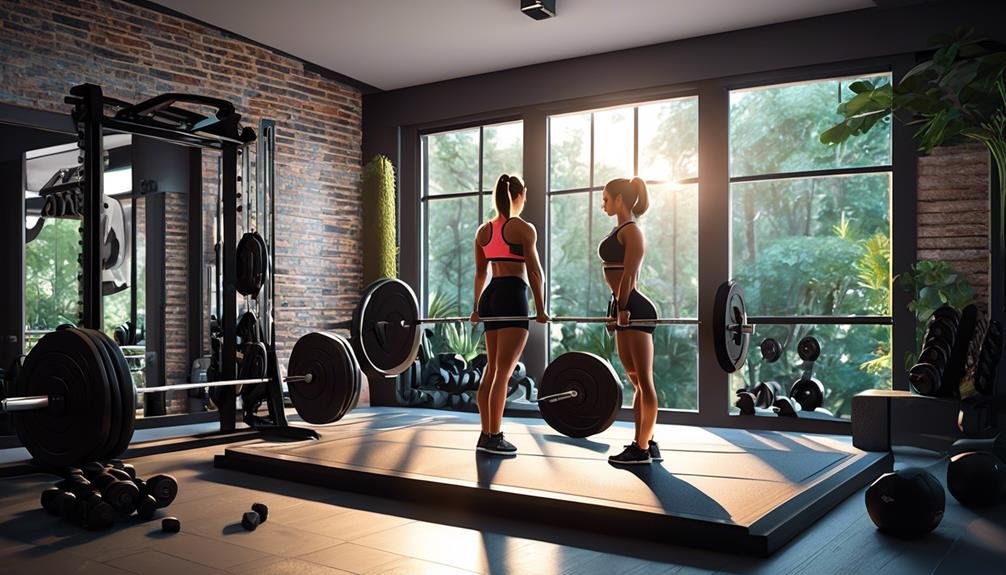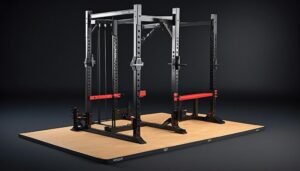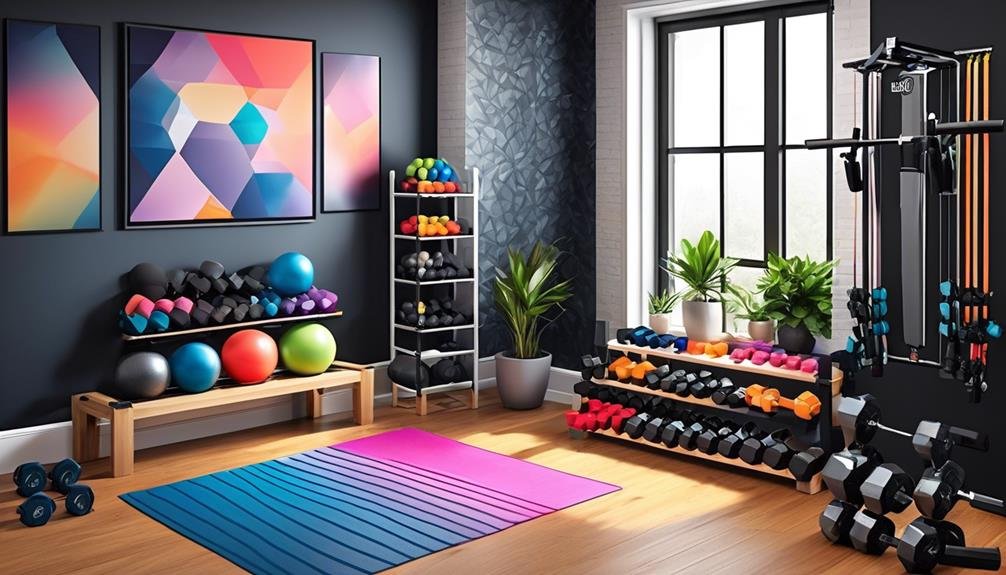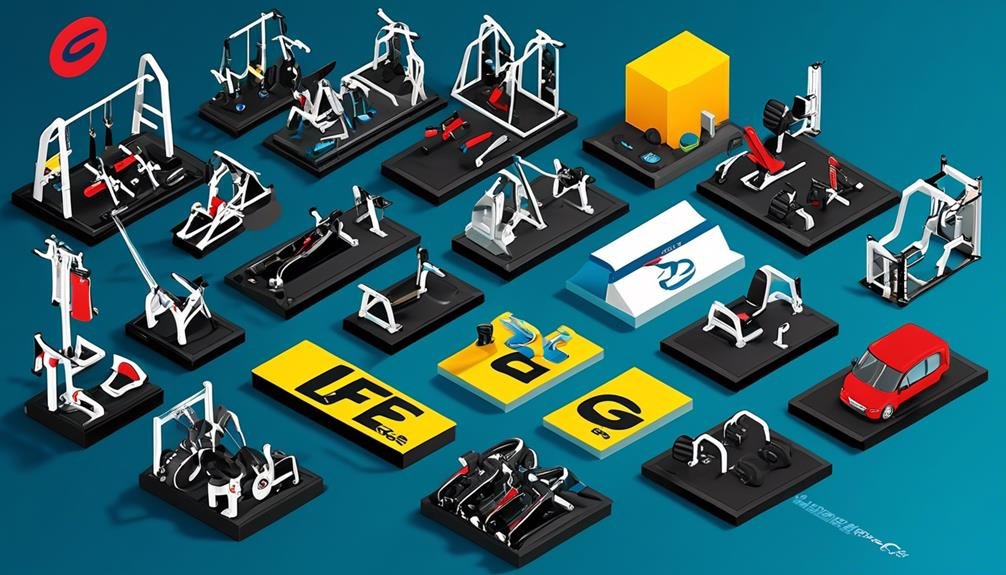Have you ever wondered if it's possible to learn how to safely lift free weights without a spotter at home?
Well, the truth is, it is indeed possible with the right precautions and knowledge.
In this discussion, we will explore various strategies and techniques that can help you lift weights safely on your own.
From choosing the right equipment to implementing safety measures, we'll provide you with valuable insights and tips to ensure a safe and effective workout.
So, if you're ready to take your fitness journey to the next level and gain the confidence to lift weights independently, keep on reading.
Key Takeaways
- Mastering proper technique and form is essential for safe weightlifting without a spotter at home.
- Prioritize safety by using equipment like safety arms or pins, or opting for exercises that don't require a spotter.
- Incorporate effective warm-up and cool-down routines to prevent injuries and promote recovery.
- Progress gradually, set realistic goals, and listen to your body to avoid overexertion and potential injuries.
The Importance of Proper Technique
To lift free weights safely and effectively at home, it's crucial to understand and prioritize the importance of proper technique. Without a spotter, it becomes even more essential to master the correct form and execution.
Proper technique is the foundation of safe weightlifting, as it ensures your muscles and joints are working in harmony, minimizing the risk of injury. When performing exercises like the barbell bench press, make sure to maintain a stable position on the bench, with your feet firmly planted on the ground. Keep your back flat against the bench, and grip the bar with a shoulder-width grip.
Lower the bar to your chest in a controlled manner, ensuring a full range of motion. Remember to exhale as you push the bar back up, engaging your chest and triceps.
Choosing the Right Equipment
Consider incorporating the right equipment into your home gym setup for a safer and more effective weightlifting experience. When lifting free weights without a spotter, it's crucial to prioritize safety and choose the right equipment that can provide added protection. Here are five items to consider when selecting equipment for your home gym:
- Power cage or squat rack with safeties: These are essential for solo training as they provide a safety net in case of failure during exercises like bench press or barbell back squats.
- Dumbbells: Opt for dumbbells instead of barbells for certain exercises as they're generally safer and easier to control, reducing the risk of injury.
- Exercise selection based on safety: Prioritize exercises that can be performed safely without a spotter, rather than solely focusing on muscle effectiveness. Safety should always come first.
- Correct height of safety arms or pins: Before loading the barbell, make sure the safety arms or pins are set at the appropriate height to catch the weight in case you can't complete the lift.
- Injury prevention over personal preference: When choosing equipment for your home gym, prioritize safety and injury prevention over personal preference. It's better to sacrifice your preferences than risk getting hurt.
Implementing Safety Measures
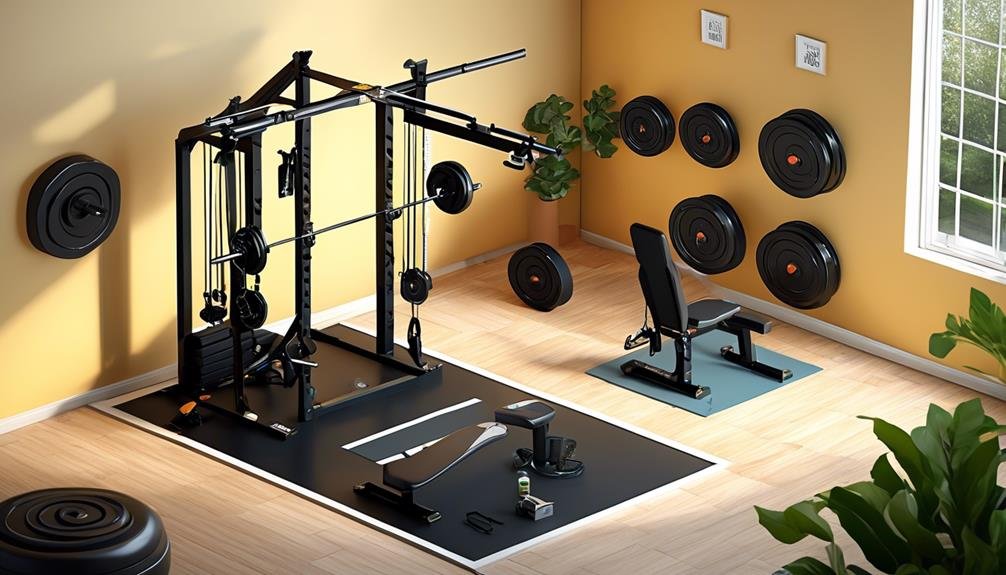
When it comes to lifting free weights safely at home, implementing proper safety measures is essential for a successful and injury-free workout. One important safety measure is to use a squat rack with safety arms or pins when performing exercises like bench press or squats. These safety features will catch the weight if you're unable to complete the lift, preventing any accidents or injuries.
If you don't have a squat rack with safety arms, it's important to prioritize safety over personal preference. Consider using alternative exercises that are safer to perform without a spotter. Another option is to use dumbbells instead of a loaded barbell for certain exercises. This eliminates the need for a spotter and reduces the risk of injury.
Avoid using a bench press without a power rack or safety pins, as this can be dangerous if you fail to complete the lift. Always use safety pins when using a bench press to ensure that the weight can be safely caught if necessary.
Effective Warm-Up and Cool-Down Routines
Start your workout off right by incorporating an effective warm-up and cool-down routine to maximize your performance and recovery. Properly preparing your muscles and joints before lifting weights without a spotter is crucial in order to keep yourself safe.
Here are five key elements to include in your warm-up and cool-down routines:
- Dynamic Warm-Up: Begin with dynamic movements that mimic the exercises you'll be doing, such as arm circles or bodyweight squats. This helps activate the relevant muscle groups and prepares them for the upcoming workout.
- Increase Blood Flow: Incorporate light cardio exercises like jogging or jumping jacks to increase blood flow and raise your body temperature. This helps loosen up your muscles and makes them more pliable.
- Dynamic Stretches: Perform dynamic stretches that involve controlled movements, such as leg swings or shoulder rotations. This helps improve flexibility and range of motion in the muscles and joints you'll be using during your workout.
- Static Stretching: After your workout, include static stretches where you hold each stretch for 20-30 seconds. This helps improve flexibility and reduce muscle soreness.
- Relaxation and Recovery: Finish your cool-down routine with deep breathing exercises or meditation to promote relaxation and aid in recovery. This helps reduce stress and tension in your body, allowing it to recover more effectively.
Progressing Gradually and Setting Realistic Goals
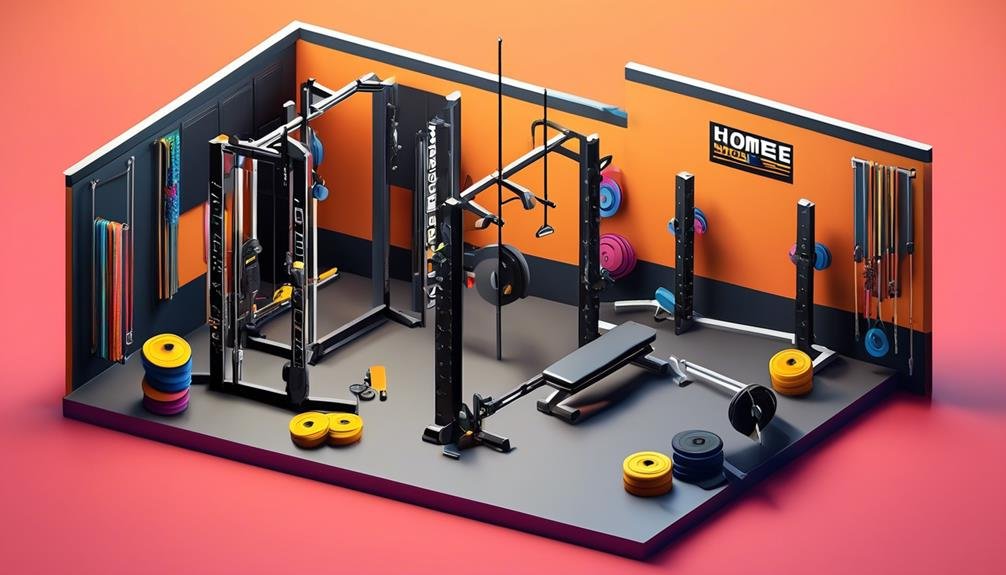
Gradually progress your weightlifting routine and set realistic goals to ensure safe and effective results. When lifting weights without a spotter, it's crucial to prioritize your safety and minimize the risk of injury.
Start by focusing on mastering proper form with light weights before increasing the load. This will help you develop a solid foundation and reduce the chance of accidents. As you become more comfortable and confident with your form, gradually increase the weight and intensity of your workouts. However, remember to listen to your body and adjust the intensity as needed.
Overexertion can lead to injuries, so it's important to progress at a pace that suits your abilities. Setting realistic goals is also essential. By setting achievable short-term and long-term goals based on your current strength and capabilities, you can prevent overexertion and maintain motivation. Remember, progress takes time and patience.
Consider working with a certified personal trainer who can assist you in developing a structured and progressive training plan tailored to your individual needs and goals. By taking these steps, you can safely lift weights at home and achieve the results you desire.
Listening to Your Body and Knowing Your Limits
To ensure a safe and productive weightlifting routine at home, it's vital to tune into your body's signals and understand your limitations. By listening to your body, you can prevent injuries, improve your form, and make progress in your weightlifting journey.
Here are some important tips to help you master the art of listening to your body:
- Pay attention to any pain, discomfort, or excessive strain during lifting. Your body communicates with you through sensations, so if something feels off, it's important to take notice.
- Stop immediately if you feel any sharp pain or discomfort in your muscles or joints. Pushing through pain can lead to serious injuries, so it's better to be safe than sorry.
- Understand that pushing your limits is different from pushing through pain. Learn to distinguish between muscle fatigue, which is a normal part of weightlifting, and potential injury signals.
- Adjust your lifting routine based on your body's feedback and limitations. If a certain exercise feels too challenging or causes discomfort, modify it or choose an alternative exercise that targets the same muscle groups.
- Focus on maintaining proper form throughout your weightlifting movements. This won't only prevent injuries but also ensure that you're effectively targeting the muscles you intend to work.
Seeking Professional Guidance and Support
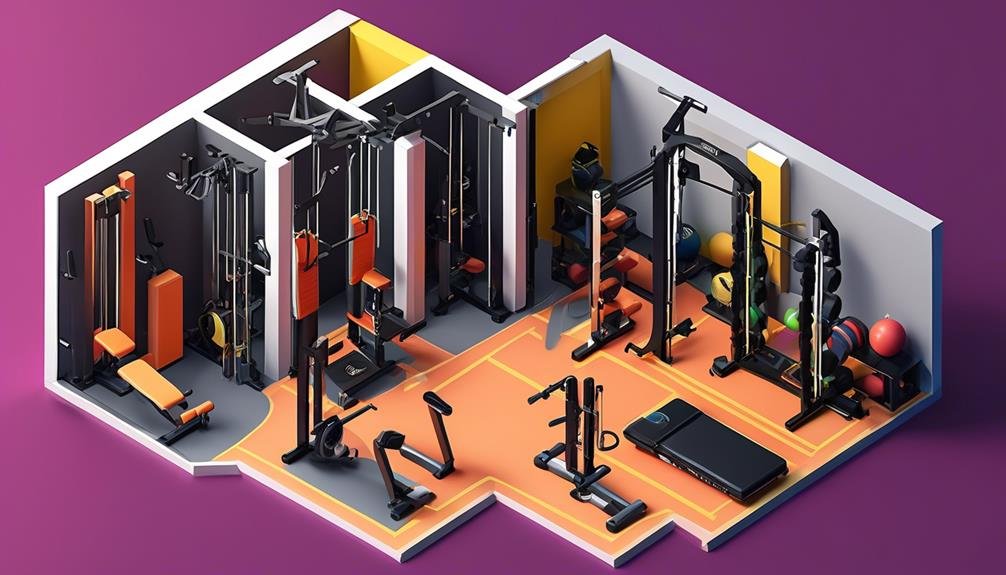
Consider seeking guidance and support from a certified personal trainer or fitness professional to ensure proper form and safety while lifting free weights at home. These experts have the knowledge and experience to teach you the correct techniques and help prevent injuries.
By enrolling in a weightlifting class or workshop led by experienced instructors, you can receive hands-on guidance and support. They'll be able to provide personalized instruction tailored to your specific needs and goals.
If you prefer more individualized attention, hiring a personal trainer for one-on-one sessions can be incredibly beneficial. They'll work closely with you to ensure you're using proper form and technique while lifting weights.
Additionally, reaching out to reputable fitness communities or online forums can provide valuable advice, tips, and recommendations from experienced lifters and trainers. These communities can offer insights and support as you navigate your weightlifting journey.
Utilizing online resources such as instructional videos and articles from certified fitness experts can further enhance your understanding of safe weightlifting practices.
Frequently Asked Questions
How Can I Lift Free Weights Without a Spotter?
You can safely lift free weights without a spotter by using a squat rack with safeties or a power cage. Consider using dumbbells instead of barbells for certain exercises. Prioritize safety, learn how to bail out, and avoid training too close to failure.
Do You Need a Spotter When Using Free Weights?
You don't always need a spotter when using free weights, but it's important to learn proper form and technique to lift safely. With dedication and practice, you can become strong and confident in lifting weights on your own.
What to Do if I Have No Spotter?
If you don't have a spotter, it's important to prioritize safety when lifting free weights at home. Learn proper form, start with lighter weights, use a power rack or bench press with safety bars, and consider using dumbbells instead. Stay strong and lift smart!
How Can I Lift Free Weights Safely?
To lift free weights safely without a spotter at home, focus on proper form and technique. Start with lighter weights and gradually increase as you build strength. Use a mirror to check your form and consider investing in equipment like a squat rack or weightlifting bench for added safety.
Conclusion
In conclusion, learning to safely lift free weights without a spotter at home requires prioritizing safety, choosing the right equipment, implementing safety measures, and seeking professional guidance.
By focusing on proper technique, gradually progressing, and listening to your body, you can reduce the risk of injury and achieve your fitness goals.
Remember, with determination and the right knowledge, you can master the art of lifting weights safely and effectively on your own.
Stay motivated and keep pushing yourself to new heights!


